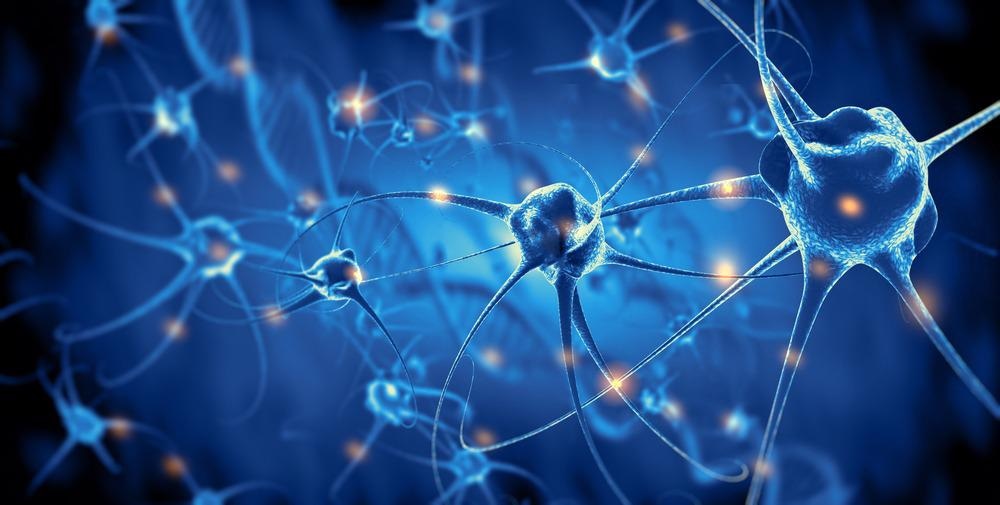A group of researchers recently published a paper in the journal Nano Energy that demonstrated a novel strategy for the rapid generation of peripheral nerves using piezoelectric stimulation and electrospun composite nanofibers.

Study: Piezoelectric stimulation from electrospun composite nanofibers for rapid peripheral nerve regeneration. Image Credit: Giovanni Cancemi/Shutterstock.com
Significance of Peripheral Nerve Regeneration
Peripheral nerve injuries often lead to loss of sensory and motor functions. Acute peripheral nerve injuries, such as sciatic nerve injuries, can cause irreversible tissue atrophy. Patients with sciatic nerve injuries suffer from untreatable and persistent muscle dysfunction and pain. Additionally, the biochemical transportation failure and continuity loss can cause nerve necrosis and limb dysfunction, further increasing the patient's discomfort.
Clinically, bridging the injured sciatic nerves is the most suitable way to successfully reconstruct injured nerves. Additionally, biological peripheral nerve regeneration, Wallerian degeneration, and Schwann cell cord formation also play a crucial role in regenerating damaged peripheral nerves. Specifically, Schwann cell cords are vital for successful axon regeneration.
Existing Peripheral Nerve Regeneration Strategies
Although several nerve regeneration strategies, such as bioactive coating and nerve grafting, were developed for peripheral nerve generation, the clinical application of these strategies was difficult due to biosafety issues and unknown adverse effects.
Electrical stimulation, a relatively new strategy, was proven effective for nerve regeneration. A consistent and stable electrical stimulation during nerve regeneration can attract the migrating Schwann cells and accelerate nerve reinnervation. Moreover, the in vitro electrical stimulation of Schwann cells can enhance the nerve growth factor (NGF) expression. However, in vitro electrical stimulations suffer from unstable electricity output and poor efficiency.
Piezoelectric Stimulation-Based Nerve Regeneration Strategy
Recently, piezoelectric materials have gained prominence due to their ability to generate in vitro electrical stimulations for peripheral nerve reconstruction. Electrical charges on the surface of piezoelectric materials act as electric reservoirs for electrical stimulation. Piezoelectric biomaterials can effectively generate electrical stimulations to support nerve regeneration. For instance, a surface-modified piezoelectric polyvinylidene difluoride (PVDF) was designed successfully for neuron-like induction in stem cells.
The axon reconnection time must be shortened to improve peripheral nerve regeneration. Delayed regeneration of nerve axons is primarily attributed to the lack of regenerative microenvironment regulation. However, identifying piezoelectric materials with an electrical output that is relatively stable, decays slowly, and lasts for a long duration to achieve faster reconnection of axons is difficult.
New Method Based on Piezoelectric Simulation Proposed for Peripheral Nerve Reconstruction
In this study, researchers fabricated piezoelectric nerve conduits using polycaprolactone (PCL)/ZnO nanofiber (PZNF) composite films through the electrospinning method and used a murine model to evaluate the effectiveness of synthesized PZNF films for peripheral nerve regeneration in in vitro mode. PZNF composites were already proven effective in previous studies for the regeneration of hard tissues.
ZnO was selected owing to its piezoelectric, semiconducting, and optical properties. Specifically, the piezoelectric property of ZnO can facilitate in vitro electrical stimulation for peripheral nerve regeneration. However, ZnO can lead to toxicity at certain concentrations. Thus, a safe ZnO concentration for the study was selected by determining the toxicity of different ZnO concentrations on Schwann cells.
PCL, a biodegradable polymer, possesses nanofibrous structures that can act as a novel environment for axonal regeneration and Schwann cell migration. Additionally, the biodegradation time of PCL ranges from months to years, which is suitable for the nerve repair process. Moreover, the mechanical properties of PCL meet the nerve repair requirements, such as sufficient and stable strength, to bridge the damaged nerve terminals.
Characterization and Evaluation of PZNF Composite Films
Field-emission transmission electron microscope (FE-TEM) and scanning electron microscope (FE-SEM) were used to characterize the morphology of fabricated composites. At the same time, a digital electric meter was employed to obtain the piezoelectric properties of the samples.
Sprague–Dawley rats were used for the in vivo and in vitro studies. Behavioral analysis was performed to determine the sciatic function index (SFI) on days 21, 28, 14, and 7 in rats after the rats underwent sciatic nerve transection. The mechanical hypersensitivity was determined and sensory function was analyzed using Von Frey calibrated filaments.
Cell culture was performed on the rat Schwann cells for further tests. Researchers also performed the Western blotting technique, immunofluorescence staining of regenerated nerves/Schwann cells, histological analysis, messenger-ribonucleic acid (mRNA) sequencing, and inductively coupled plasma test.
Significance of the Study
Biodegradable PZNF composite films were fabricated successfully through the electrospinning method under biosafe concentrations. The films consistently generated piezoelectricity and provided in vitro electrical stimulation with less traumatic implantation and good mobility.
The fabricated PZNF film significantly shortened the sciatic nerve repair duration within four weeks compared to the traditional eight to twelve weeks with physical continuity and functional recovery. Myelin sheath numbers increased considerably and the role of Schwann cells in facilitating the repair of NF200 nerve filament was observed.
PZNF increased the Schwann cell, vascular endothelial growth factor (VEGF), and NGF expression at the gene and protein levels. The mRNA sequencing indicated that the rearranged during transfection (RET) signaling pathway and its downstream protein growth factor receptor-bound protein 2 (GRB2) played a crucial role in the electrically stimulated nerve regeneration.
The GRB2 and its associated pathway showed sensitivity to electrical stimulation. Additionally, the increase in GRB2 expression enhanced the epidermal growth factor (EGF) expression after piezoelectric stimulation, which indicated that GRB2 is an electrically sensitive protein and demonstrated nerve regeneration.
Taken together, the findings of this study demonstrated a novel method for rapid regeneration of injured peripheral nerves using PZNF as a stable in vitro piezoelectric material.
Reference
Yu, B., Cui, J., Mao, R. et al. (2022) Piezoelectric stimulation from electrospun composite nanofibers for rapid peripheral nerve regeneration. Nano Energy. https://www.sciencedirect.com/science/article/pii/S2211285522004001?via%3Dihub
Disclaimer: The views expressed here are those of the author expressed in their private capacity and do not necessarily represent the views of AZoM.com Limited T/A AZoNetwork the owner and operator of this website. This disclaimer forms part of the Terms and conditions of use of this website.